← Back to hompage
✱ Edge Platform by Halliburton


Halliburton, one of the world’s largest providers of products and services for the energy industry, developed the Edge Platform as a cornerstone of its digital drilling automation strategy. This data-intensive operating system powers oil rigs globally, enabling real-time monitoring, data analysis, and operational control in high-stakes environments like drilling rigs and remote command centers.
The Edge Platform was designed to ingest data from a multitude of hardware sensors, analyze it instantly, and present insights that allow operators and engineers to make mission-critical decisions in real time. I joined the initiative to improve usability, enhance feature depth, and establish scalable design processes. Over the course of two years, I led the UX efforts to deliver powerful, user-centered experiences across one of the industry’s most complex environments.
● Senior UX Designer, Design Lead, 2021 ←→ 2023
● Collaborated with a global, agile-driven team of 50+ specialists, including engineers, product managers, domain consultants, and legal reviewers. Working across time zones and disciplines, I helped bridge technical complexity with user-friendly, efficient design solutions.
● I served as the Senior UX designer and later as a UX Lead for a sub-team of three, owning end-to-end design responsibilities across multiple applications and feature sets for the platform.
Designing for oil rigs is unlike designing for any other digital environment. The Edge Platform had to function flawlessly in noisy, high-pressure, and data-dense environments — sometimes with limited bandwidth or visibility. Key challenges included:
● Making massive volumes of live sensor data intelligible at a glance
● Balancing deep domain specificity with intuitive workflows
● Designing for accessibility and focus in high-risk environments
● Aligning design decisions with strict legal and procedural standards
● Supporting a fragmented and legacy-heavy technology stack
The platform’s main users — rig crew, data engineers, and company representatives — had vastly different goals and workflows, requiring tailored solutions and robust access controls. To succeed, we needed to design not just interfaces, but systems of trust.
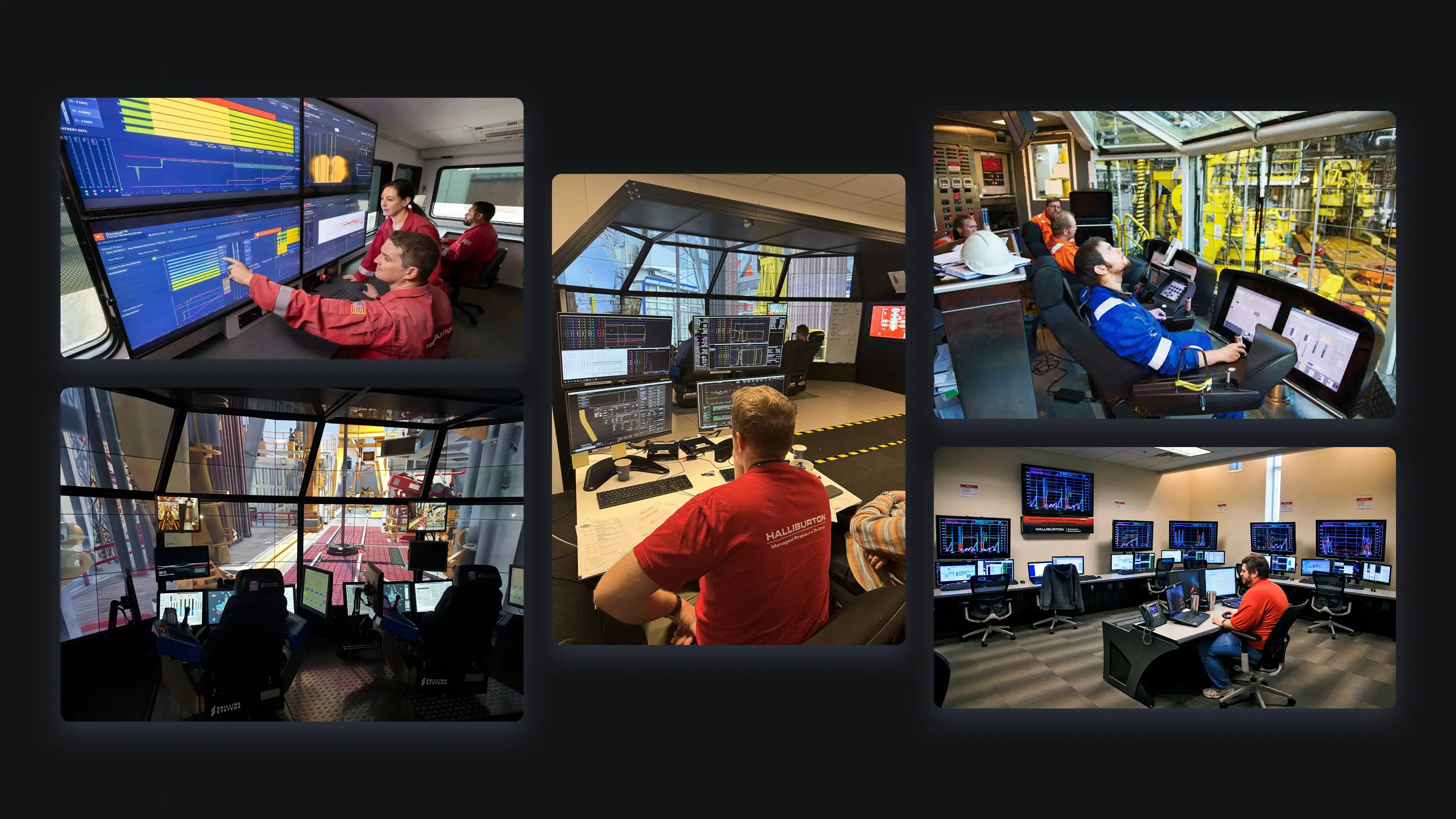
The design process was highly iterative and anchored in real-world usage. We built a structured yet flexible UX pipeline that aligned with agile delivery. In total it was conducted over 520 hours of user interviews and test sessions, regularly speaking with drillers, engineers, and operators in the field. Methods included:
● In-depth interviews and workflow shadowing
● Surveys to validate assumptions at scale
● Usability testing with interactive prototypes
● A/B testing for form and navigation improvements
● Field validation and voice-of-customer (VoC) sessions

Each feature began with clearly scoped problem statements — defined collaboratively with PMs and engineers. I ensured we understood the user pain points before moving into design.
Using Figma, the team built complex interactive prototypes that simulated full workflows, allowing users to explore proposed solutions and offer feedback early. These included both new application flows and reworks of legacy components.
Every design was tested in multiple rounds — internally and with field users. Based on feedback, we iterated on flows, language, and interaction patterns. After development, the team continued UX enhancements based on real usage data from HotJar, GA, internal logs and task analytics.
We prepared detailed UX documentation, including component specs, accessibility guidelines, user flows, and interaction principles. These assets became part of our centralized design knowledge base, streamlining collaboration with engineering and QA.
To unify experiences across Edge and other Halliburton products, I helped evolve a comprehensive design system using an atomic approach.
● Optimized for dark mode by default, for rig environments
● Light mode support for office-based users
● Full accessibility audits and contrast compliance
● Component documentation with flexible variants
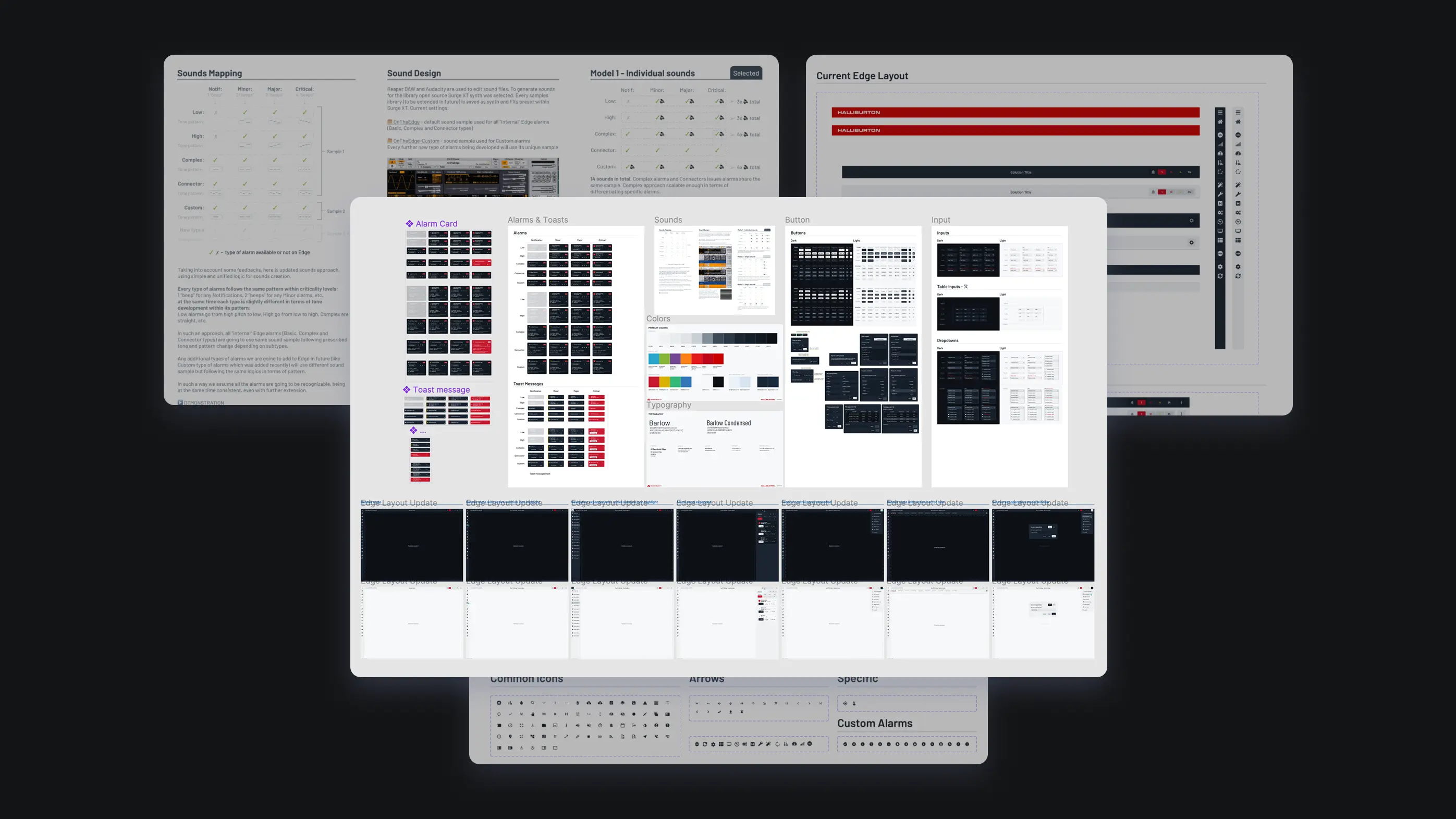
Navigation was reimagined from the ground up. A restructured hierarchy, clearer labeling, and tailored views based on user roles dramatically reduced friction and cognitive overhead. Users now spend less time searching and more time doing.
In data-intensive areas such as reporting dashboards, complex forms, and sensor configuration interfaces, workflows were simplified to minimize steps and surface key actions. Dense information was organized into digestible patterns, allowing users to interpret and act on data with confidence.
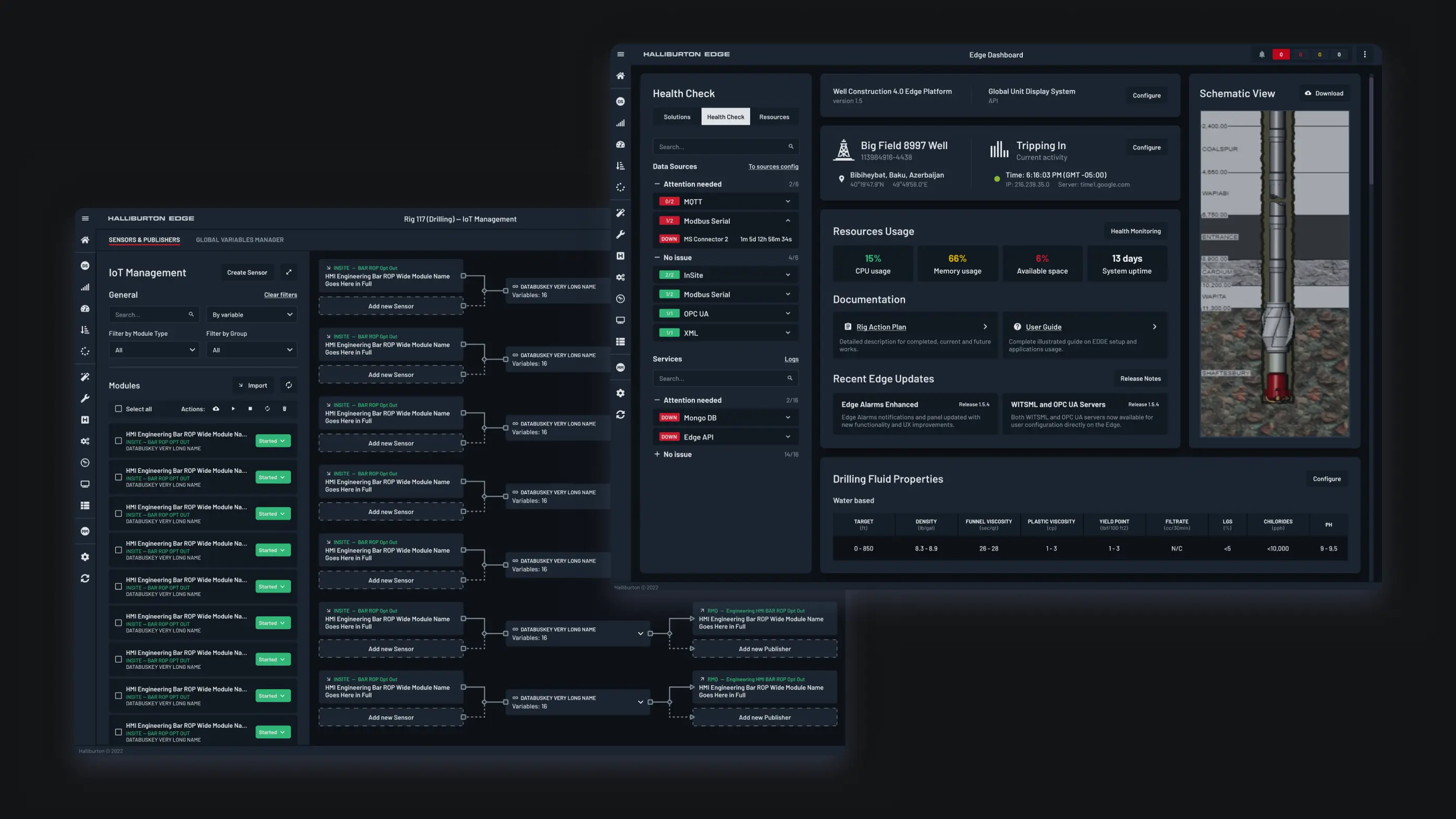
Accessibility improvements addressed the real-world conditions many users operate in noisy, space-limited environments with constrained interaction windows. Visual and interaction design choices focused on clarity, contrast, and tactile responsiveness to ensure usability across contexts.
A redesigned information architecture underpins the entire experience. Tasks that once required multiple steps are now streamlined through intuitive paths, accelerating completion times and improving visibility into essential data — especially for users managing operations at scale.
The project delivered over 15 new, high-impact applications — each designed to meet the demands of industrial environments and operational precision.
A robust notification system was developed with purpose-built sound design, ensuring alerts cut through high-noise settings without contributing to alarm fatigue. Every audio cue was tuned for urgency, clarity, and context relevance.
Modular dashboard components now support real-time monitoring and drill-down access to historical data, empowering users to shift seamlessly between overview and detail. These modules were built for flexibility, enabling teams to configure views based on specific operational needs.
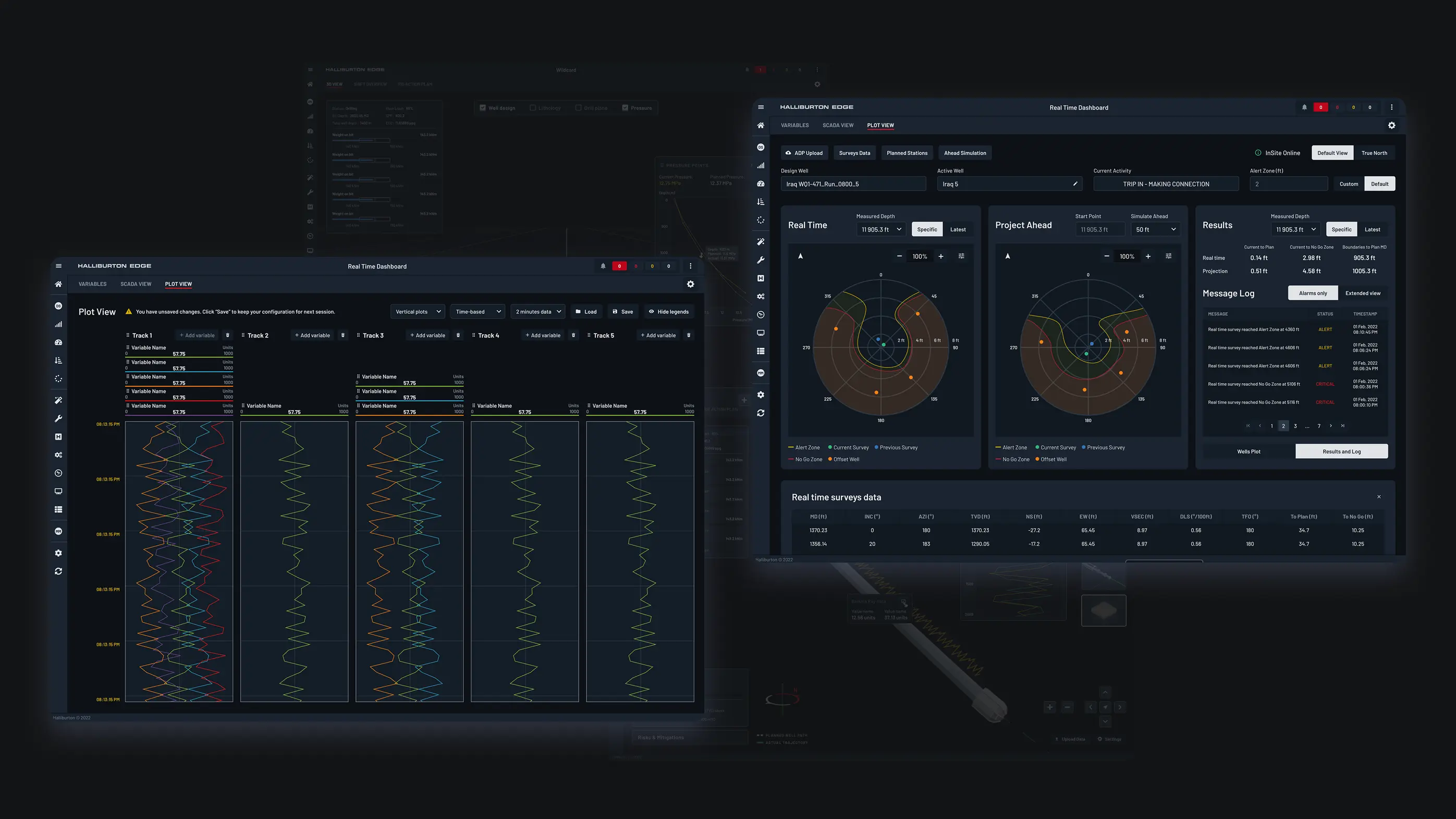
Among the most technically complex additions was a 3D drilling visualization layer, providing live feedback from the field. This interactive layer helps operators make fast, informed decisions by visualizing performance in real time, bridging the gap between abstract data and physical action.
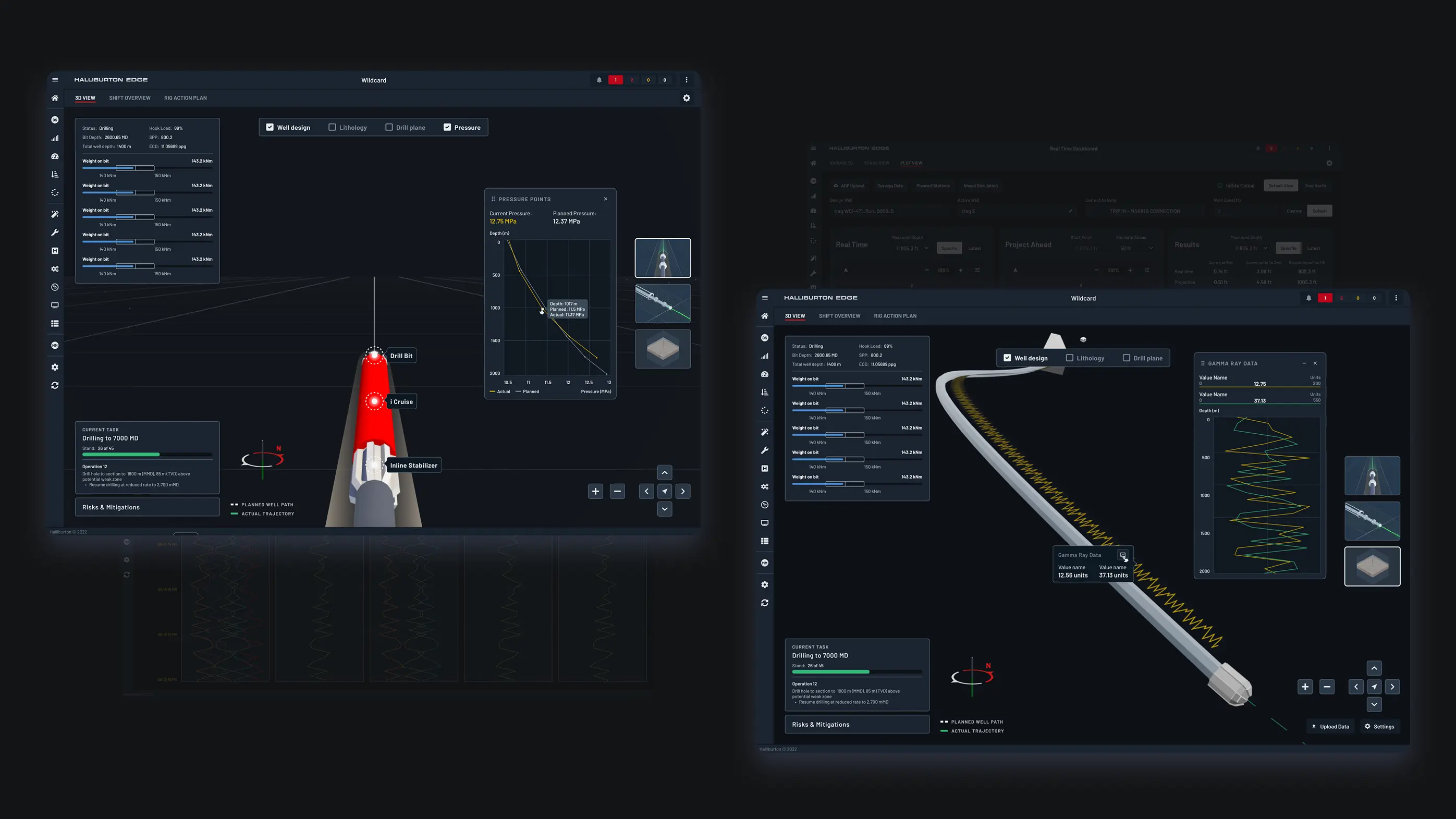
As part of building a new alarm and notification system, I led UX support for industrial sound design which was previously an unsupported area. After user research and field testing, we created a library of scalable, audible cues designed for both rig and control room conditions.
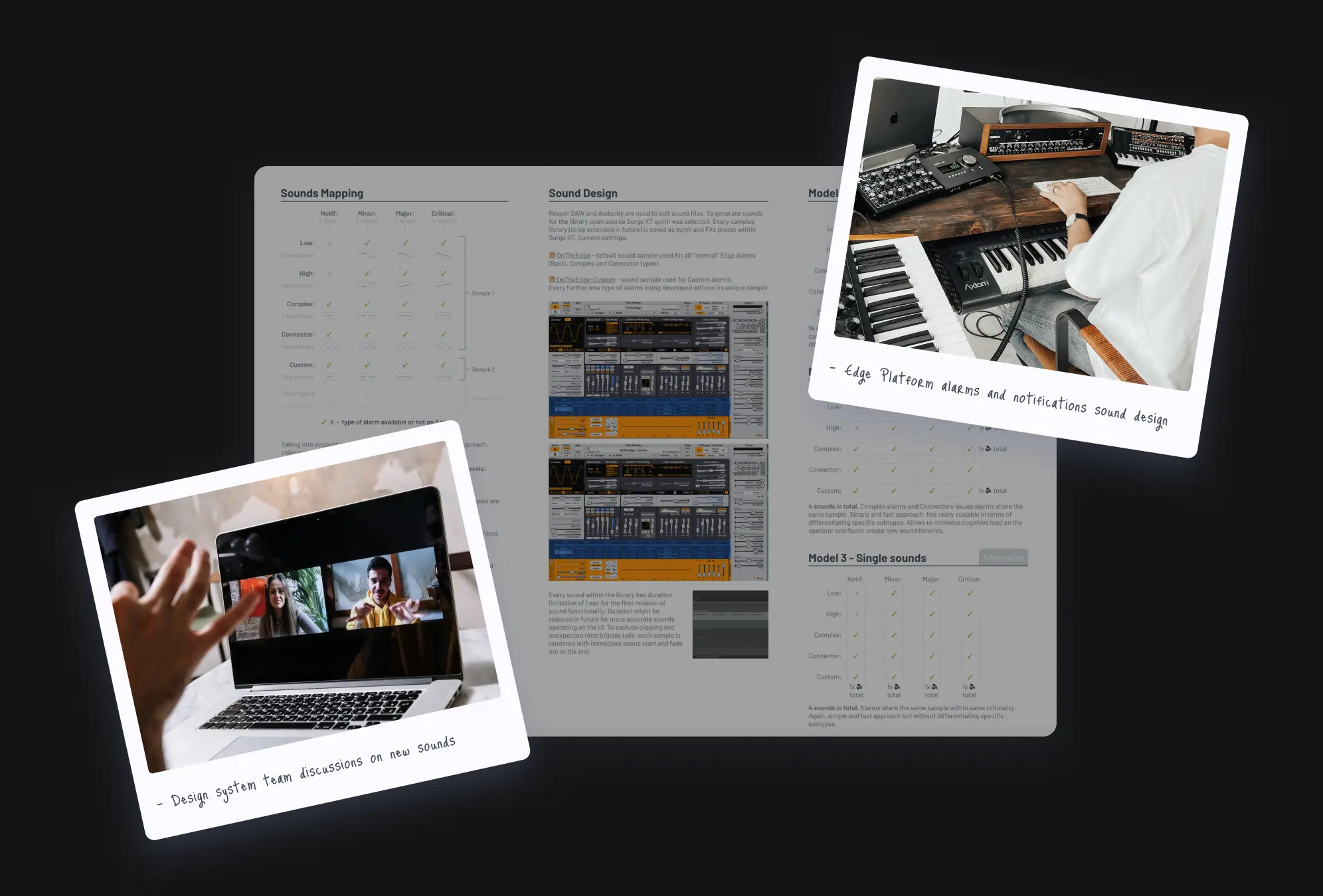
Hours of user interviews and testing sessions conducted
Domain experts involved for continuous research and validation
Screens of product and prototypes designed and delivered
Complex applications developed and delivered to production
Increase in product adoption rate across the platform
Faster design validation cycles by accelerating prototyping
Design system components and blocks created and documented
Task completion rate improvement in complex scenarios
The work on the Edge Platform resulted in demonstrable improvements across usability, task performance, and product consistency.
The redesign led to measurable improvements across core workflows, including reduced time on task, higher completion rates in complex scenarios, and lower error rates driven by clearer affordances and data presentation. Internal surveys and demo feedback reflected a notable increase in user satisfaction.
On the operational side, new users onboarded faster thanks to improved dashboard orientation, while streamlined workflows for rig operators reduced cognitive load and significantly cut down support requests related to navigation and data entry.
01 ↘︎ Designing for the Edge Platform was a masterclass in solving problems at the intersection of domain complexity, real-time data, and high-stakes user environments. Above all, the experience taught me that great UX in industrial contexts doesn’t just enhance usability — it can directly improve safety, performance, and decision-making at the edge of what's possible.
02 ↘︎ This project deepened my understanding of what it means to design for experts — users with highly specific goals, domain knowledge, and expectations for precision. It also sharpened my ability to facilitate collaboration across time zones, disciplines, and organizational layers.
03 ↘︎ Leading the UX efforts in a high-responsibility environment gave me the confidence to drive decisions that balance user needs with business and technical constraints. Most importantly, it strengthened my ability to scale design thinking across a complex, evolving system, without losing sight of the human experience at its core.